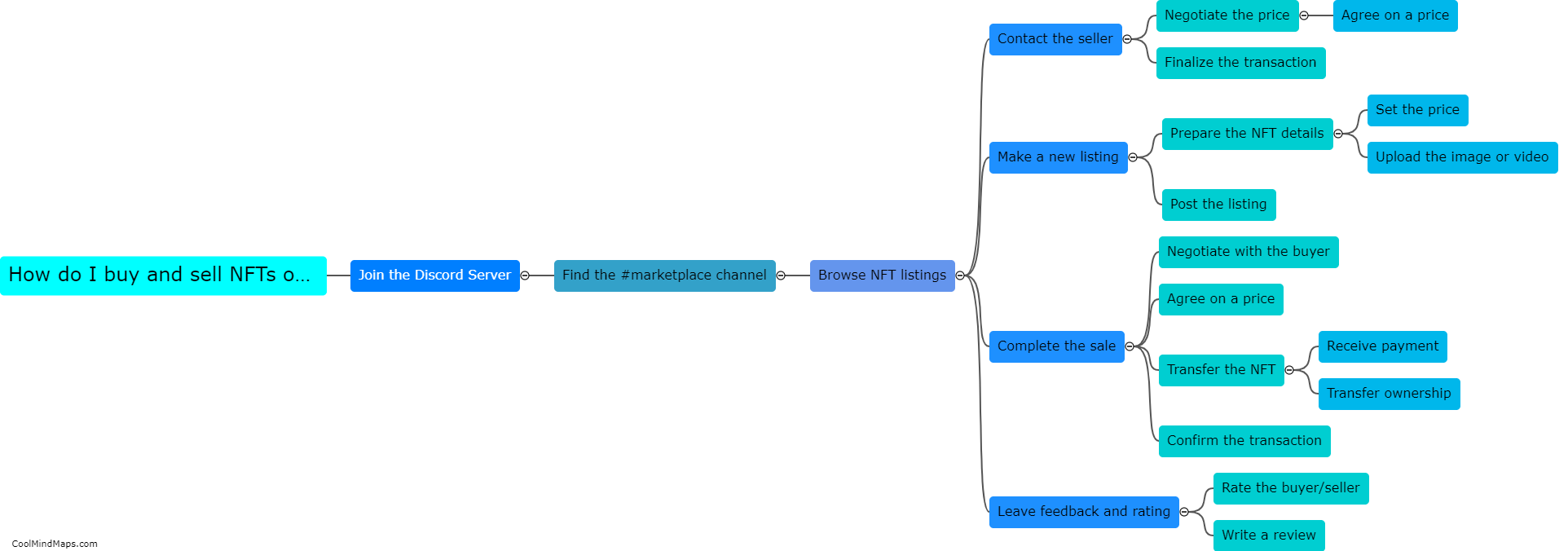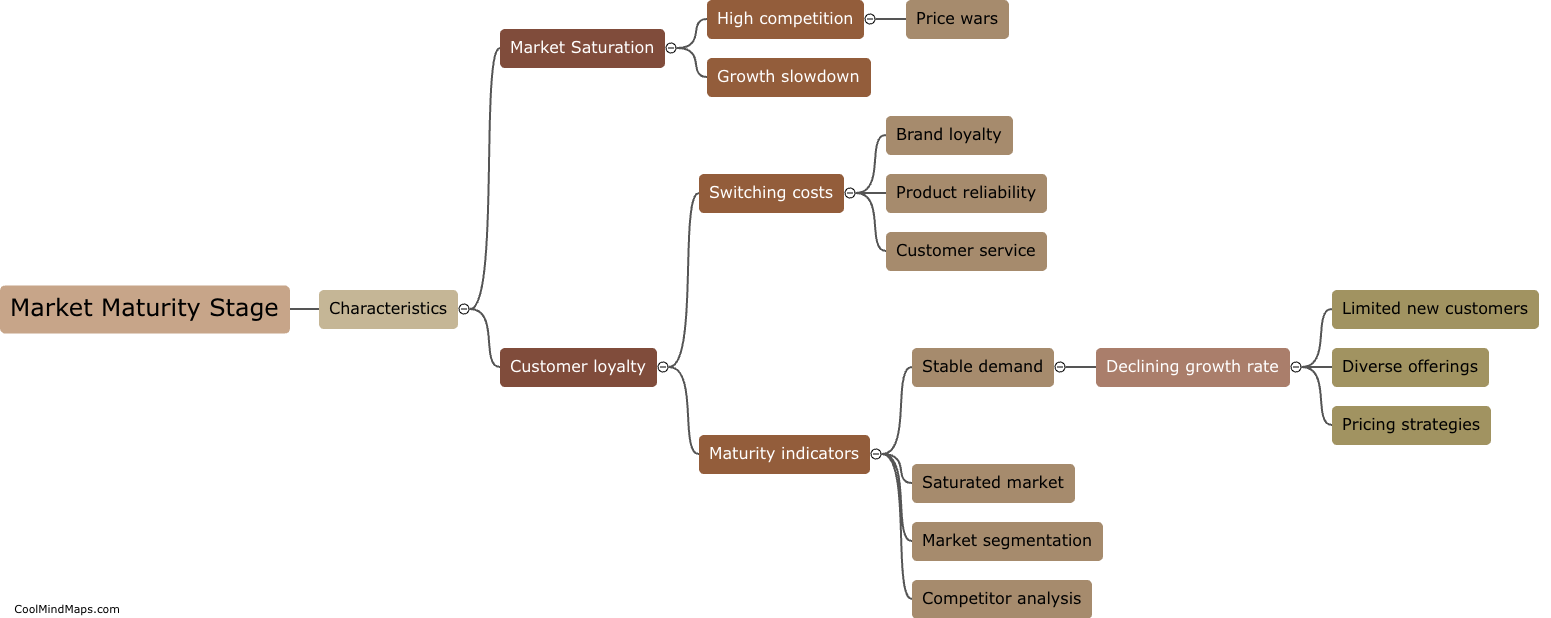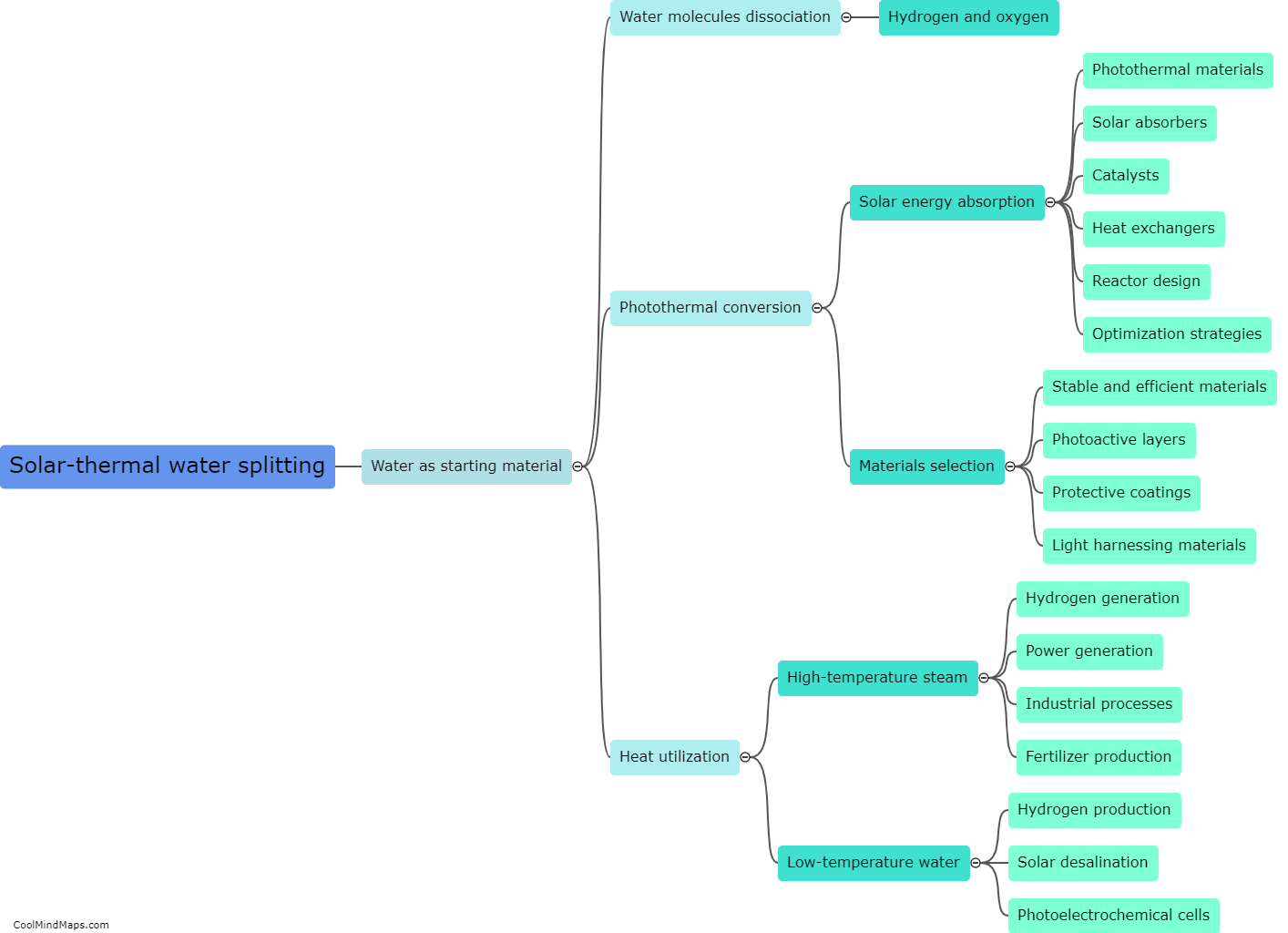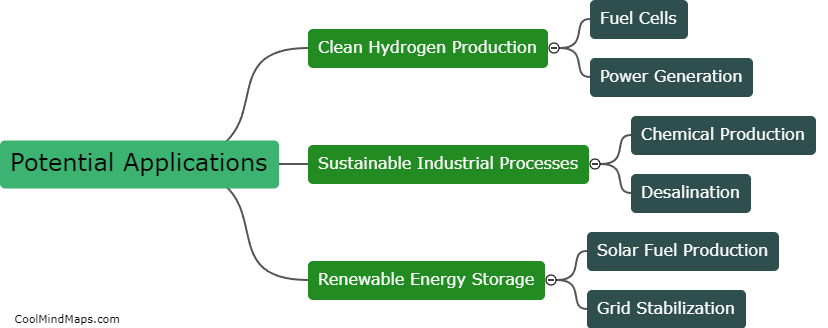What is solar-thermal water splitting?
Solar-thermal water splitting is a process that utilizes concentrated solar energy to split water molecules into hydrogen and oxygen. This renewable energy technology harnesses the heat from the sun to drive a chemical reaction, primarily involving the use of a solar thermal collector and a metal oxide material. As the solar energy is concentrated and absorbed by the metal oxide, it undergoes a series of thermochemical reactions, enabling the splitting of water molecules. The resulting hydrogen gas can then be utilized as a clean and sustainable energy source for various applications, such as fuel cells or powering vehicles, while oxygen can be released into the atmosphere. Solar-thermal water splitting holds immense potential for producing renewable hydrogen, an essential resource in achieving a greener and more sustainable future.
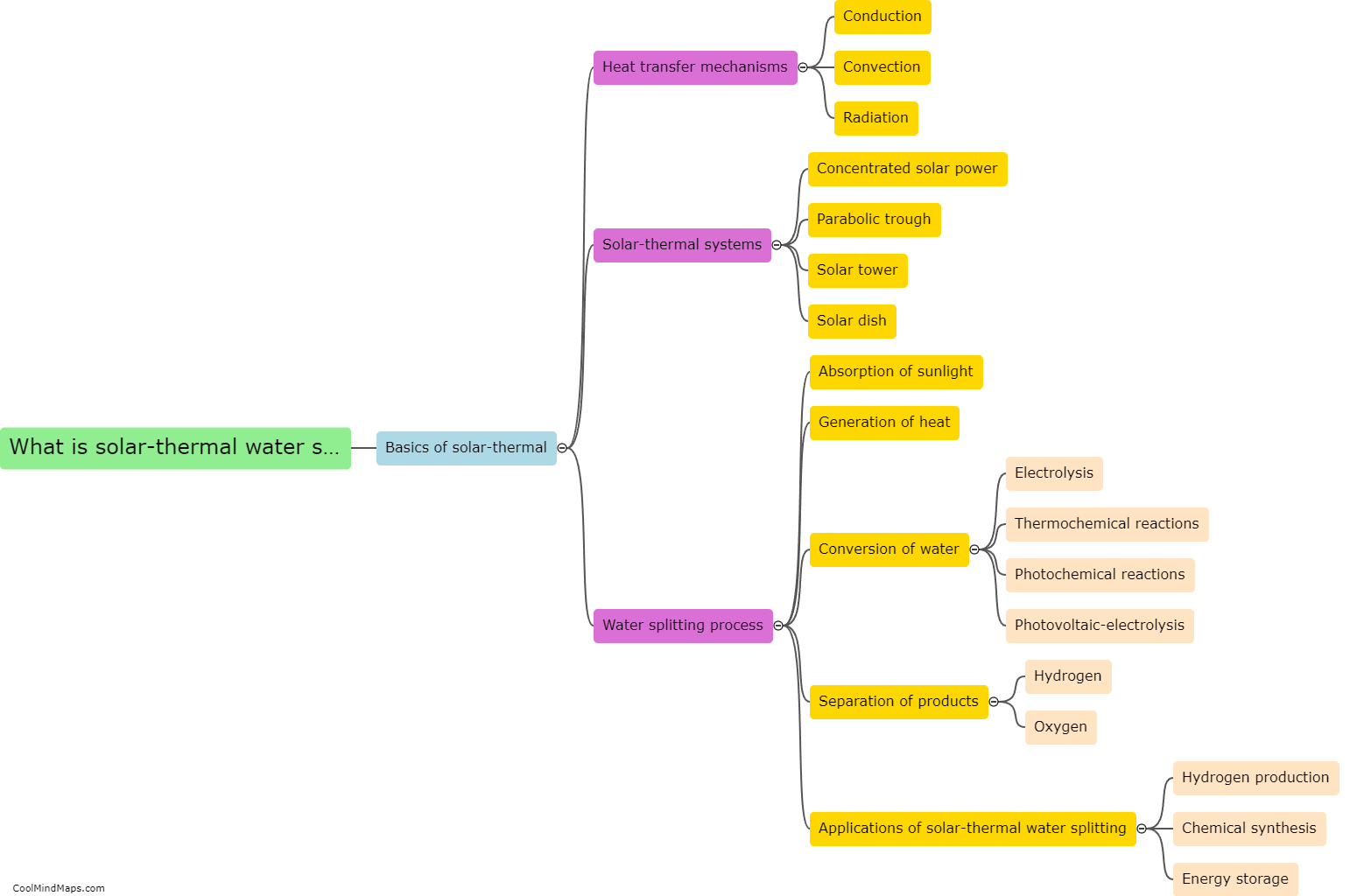
This mind map was published on 17 October 2023 and has been viewed 113 times.

